Introduction
Keokuk is a fascinating place. Once an important river town and bustling community, Keokuk today is striding the line between obscurity and irrelevance. What happened?
Visitor Information
The Keokuk Area Convention & Tourism Bureau (428 Main St.; 319.524.5599) can help with suggestions about what’s happening in the area.
History
The first European to move into the area was apparently Dr. Samuel C. Muir who built a cabin here in 1820. Muir had been a surgeon in the US Army at Fort Edwards (Warsaw, Illinois), but when the government ordered soldiers to leave their Indian wives, he left the Army instead. Muir moved away after a few years and leased his claim to St. Louisans Otis Reynolds and John Culver, who sent Moses Stillwell upriver in 1828 to set up a trading post. Muir came back in 1830 and took over, setting up a post of his own, but he died of cholera in 1832. Stillwell’s stone warehouse was wiped away by Great Ice Gorge of 1832.
For the first several years of its life, the little settlement at foot of the Des Moines Rapids had many identities, going by names like Point, Foot of the Rapids, and Puck-e-she-tuck (which probably means “where the water runs still” but some early Europeans and Americans interpreted it as “the foot of the rapids”).
There are a few versions of how the name Keokuk became permanently attached to the place. In one account, a group of rivermen (that included Colonel George Davenport from upriver) decided on the name shortly after the end of the Black Hawk War, presumably to honor the Sauk leader.
My personal favorite, though, is the version that says a group of nine men met at John Gains’ bar (Gains was also the first postmaster) in September 1834 to settle the matter. Someone proposed the name Keokuk and all those in favor were instructed to walk up to the bar and drink a shot of whiskey. The vote carried 8 to 1. The lone dissenter was J.B. Patterson, who had only been in town for a couple of weeks and apparently wasn’t too fond of the Sauk leader, or whiskey.
The City’s Namesake
Who was Keokuk, you ask? Born around 1780 at Saukenuk, near present-day Rock Island, Keokuk was rather tall and fat, liked his whiskey, loved the Mississippi River, and loved women; he had several wives. He was well-respected for his skills as a negotiator and peacemaker and is widely credited with convincing most of the Sauk warriors to stay out of the Black Hawk War. When that war ended in 1832, Keokuk and those who stayed out of the battles were still forced to sign a treaty surrendering their land, just like Black Hawk and those who fought.
After their removal, Keokuk traveled a lot on his beloved horse, making regular visits to Osage, Ho Chunk, Ottawa, and Omaha Indians. When he visited them, he went in style: riding on a Spanish saddle, dressed in an elegant handmade robe, adorned with a wampum, porcupine quills, and beads, half moons of silver dangling down his back, wearing a headdress of silver bobs and feathers, and carrying a rifle, scalping knife, tomahawk, pipe, and war club. There wasn’t much about him that was subtle.
Keokuk died in April 1848 and was initially buried in Franklin County, Kansas. For a while after his death, his skull was supposedly on the altar of a Masonic lodge but with the help of a doctor who was also a Mason, it was retrieved and replaced with a different skull so it could be buried with the rest of his remains. His body was moved to Rand Park in the city that bears his name in 1883, with the approval of Keokuk’s son, Moses, and a monument built over the grave.
The Early Years
Keokuk was officially recorded as the village’s name in an 1837 plat by Dr. Isaac Galland and David Kilbourne. At the time of the plat, the entirety of the town was a few dilapidated houses known affectionately as “Rat Row.” These homes were originally built by the American Fur Company but abandoned when the Black Hawk War broke out.
The city was incorporated in 1847 and ferry service to Hamilton and Warsaw (Illinois) and Alexandria (Missouri) began soon after that. Keokuk had a reputation for lawlessness in the early years. Stories circulated that boats preferred to anchor in the middle of the river rather than tie up at town; they didn’t want to risk being plundered. Englishman Charles Augustus Murray passed through Keokuk in 1835 and wasn’t too impressed. He wrote:
This village of Keokuk is the lowest and most blackguard place that I have yet visited : its population is composed chiefly of the watermen who assist in loading and unloading the keel- boats, and in towing them up when the rapids are too strong for the steam-engines. They are a coarse and ferocious caricature of the London bargemen, and their chief occupation seems to consist in drinking, fighting, and gambling.”
–from Murray’s Travels in America, Vol. II, 1835, p. 96
By the 1850s, though, an economic boom transformed the city as new residents poured in and civilized the city. Among those new arrivals were several members of the Clemens family, including the future Mark Twain. Sam Clemens lived in Keokuk for two years, working in his brother’s print shop at 202 Main Street. Young Sam was invited to submit a couple of articles to the Keokuk Daily Post by the publisher, Senator Thomas Rees, and offered$5 for each article. After the first article was accepted, Clemens wanted $7.50 for the second, which the paper agreed to pay, after some deliberation. When Clemens wanted $10 for the third, however, they declined and didn’t publish any more of his works. Fortunately for us, that decision didn’t end Clemens’ writing career.
Sam worked for his brother, Orion Clemens. Orion, along with his brothers, Sam and Henry, published Keokuk’s first city directory in 1856; Sam Clemens listed his occupation as “Antiquarian.” Orion tried many occupations (lawyer, printer, newspaperman, editor, chicken farmer, silver mine speculator, memoirist, biblical scholar) but didn’t do very well at any of them. Later in life, Twain started a novel based on his brother’s life that he never finished. He was going to call it Autobiography of a Damned Fool. Orion and Sam’s mother, Jane Lampton Clemens, lived out their lives in Keokuk. Jane died in 1890, Orion in 1897. Both were buried in Hannibal.
During the time the Clemens family was settling into Keokuk, the city was in the middle of a real estate boom. One person observed that prices were so high in 1856 that “you couldn’t reach them with an airship.” That all ended in 1857 when the national economy crashed. In Keokuk, land that had been selling for $1,000 became hard to sell for $10.
Justice Miller
Another prominent early resident was Justice Samuel Freeman Miller. Miller, a native of Kentucky, worked as a pharmacy clerk at age 15, then graduated from Transylvania Medical School when he was 20. For ten years, he was the only physician in Barbourville, Kentucky. Miller wasn’t satisfied being just a physician, though. In 1847 he was admitted to the bar and practiced law in Kentucky for three years. He moved to Keokuk in 1850, apparently because he felt increasingly isolated as an abolitionist in Kentucky. He owned slaves himself, but when he arrived in Keokuk he set them free.
In 1862, President Lincoln appointed Miller to the US Supreme Court to fill a spot that had been vacant for over two years. Miller was the first justice on the court who lived west of the Mississippi River. It was a busy time for the court. Miller heard some 5,000 cases, many of them about difficult constitutional issues related to war and the Confederacy, Reconstruction, and the settlement of the West. He died on the same day he released his last opinion for the court, on October 13, 1890.
Many People from Many Places
Keokuk, being a busy river town, attracted folks from a wide variety of backgrounds. By the mid-1850s, Keokuk’s Jewish community was large enough to form a Benevolent Society and to buy land for a cemetery. The first burial was in 1858, young Bertha Aal, who was just over a year old. The community built a synagogue in 1877, Congregation B’Nai Israel. The Romanesque building had an auditorium that could seat 400, a sign of great optimism from the twenty families who were members at that time. The synagogue was decorated with carved white pine, frescoes on the walls and ceiling, and stained glass windows. The exterior had two octagonal turrets and decorative iron work. Iowa’s first synagogue cost about $15,000 to build. The hoped-for wave of Jewish immigrants to Keokuk never materialized, though. The building was sold to the Keokuk Gospel Center in 1933 and torn down in 1957.
A handful of African Americans moved to Keokuk before the Civil War, including Charlotta Gordon Machenry Pyles. Charlotta escaped slavery in Kentucky when her owner, Frances Gordon, moved the family out of state so she could grant them their freedom. After a dangerous trip in which they had to deal with extortionists and avoid slave catchers, Charlotta, her husband, Henry, and several children reached Keokuk and decided to stay. On April 2, 1857, Charlotta and Henry legally married in Lee County, something they had not been able to do in Kentucky.
Even though she had no formal schooling, Charlotta lectured around the country, becoming acquainted with Frederick Douglass and Susan B. Anthony, while pleading the abolitionist cause. In six months, she raised $3,000 that she used to buy the freedom of two of her sons-in-law. In Keokuk, even though her family remained poor, she provided a home for her former master, Frances Gordon, and helped escaped slaves make their way to Canada.
The Civil War Comes to Keokuk
Keokuk sent over 1,300 men to fight in the Civil War (the city’s population was about 8,100 in 1860), losing 158 of them. Keokuk was the point of embarkation for all of Iowa’s Civil War soldiers, some 80,000 men, making its riverfront a very busy place.
Keokuk was also the place the Union Army sent many of its wounded. There were seven hospitals in the city, and the College of Physicians and Surgeons had been training doctors in Keokuk since 1850. The first wounded, 296 men who fought at the Battle of Shiloh, were transported to Keokuk on the Jerry Deane, a sidewheel steamboat that arrived on April 20, 1862. Three hundred more soldiers arrived three days later.
Although Congress passed legislation in 1862 that authorized a national cemetery in Keokuk, the city donated about three acres in Oakland Cemetery rather than take money from the federal government. By the end of the Civil War, 627 Union soldiers were buried in the new national cemetery, along with eight Confederate soldiers. There were also a number of Confederate soldiers who died en route to the prison camp upriver at Rock Island; they were buried in the Mississippi River.
Life is Good
With the Civil War over, the city got back to the business of growing. City leaders believed that bridging the Mississippi was a key to making that happen. In 1868 the Hamilton & Keokuk Bridge Company was founded; one of its members was a young Andrew Carnegie. The company succeeded in building a drawbridge that opened for business in 1871. It had a railroad track down the middle, a road on either side for vehicle traffic, and sidewalks outside the vehicle lanes.
In the latter part of the 19th century, Keokuk was the site of so many mercantile companies supplying folks heading west that the city was nicknamed “Gate City”, not to be confused with the Gateway City further downriver. Keokuk also developed a strong manufacturing base that produced iron works (stoves and locomotives, for example), furniture, and clothing. Because it was close to a lot of farms, Keokuk developed an industry in food processing and canning.
In 1868, construction began on a canal that would allow river boats to bypass the Des Moines Rapids. The rapids ran roughly 11 miles from Montrose to Keokuk, dropping 22 feet in elevation. Most of the time, the rapids had just three feet of water running over them, which is why so few boats could navigate over them with a full load. The 8-mile canal and its three locks took nine years and $4.5 million to complete (nearly twice the estimated cost), but it allowed boats to get past the rapids without slowing down to unload and reload. The canal became obsolete when the hydroelectric dam was built 30 years later.
Keokuk’s rail depot opened in 1891. At its peak, Keokuk was served by seven different lines that ran twenty daily trains. Main Street had an electric streetcar down the middle in early 1900s, and Keokuk was connected to the Illinois cities of Hamilton and Warsaw by streetcar lines (they were all shut down by 1930).
Keokuk was a big enough deal in the 19th century that it attracted a number of celebrity lecturers, including Tom Thumb, Carrie Nation, Mark Twain, President Theodore Roosevelt, and Frederick Douglass.
Pioneering Desegregation
After the Civil War, a significant number of African Americans moved to Keokuk, eventually accounting for about 8% of the city’s population. While many communities along the Mississippi River were just temporary stops for African Americans, many opted to stay when they reached Keokuk.
Like most places in the US, Keokuk operated separate schools for black and white children. The first school for blacks was built in 1869 at 11th and Main, but it didn’t operate all that long. In 1875, the Iowa Supreme Court ruled that segregating schools based on race violated the state’s constitution. Some of the plaintiffs in the suit were from Keokuk.
School integration didn’t seem to generate much opposition in Keokuk. In 1878 William O. Vance became the first African American to graduate from the integrated high school. He would become a doctor and practice medicine in New Albany, Indiana until his death in 1906. Another one of the early graduates was Geroid Smith (Class of 1880), the grandson of Charlotta Pyles.
Even with school integration proceeding rather smoothly, Keokuk wasn’t exactly Utopia for its black residents. For decades, most blacks could only find work in unskilled or low skilled jobs at coal yards or hotels, with the railroad, or as domestic help. In the late 1880s, Dr. William Harper opened a café in Keokuk because no restaurant in town would serve African Americans. He called it Blessed St. Martin, probably named after St. Martin de Porres, “the patron saint of mixed-race people and all those seeking interracial harmony.” But, for the era, African American residents in Keokuk had more opportunities than African Americans in many other parts of the country. Some became noted doctors and educators and, perhaps the strongest testament to the life the city offered, many of their descendants still live in Keokuk today.
The Eccentric Dreamer
Among the folks who arrived in Keokuk near the end of the 19th century was John C. (JC) Hubinger. He arrived with his family in 1875 (JC was then 24 years old). His parents opened a bakery and put all eight of their children to work in it. John’s mother also ran a boarding school. While working as a salesman in Connecticut, he realized that there was a big market for starch that could be sold directly to consumers. He founded a company in New Haven to make and sell a product he called elastic starch, probably creating a recipe from a sample he bought from a Chinese launderer. He mixed his first batches at home and sold them door-to-door.
In 1884, he married Philadelphia native Sadie Watts; they had three children. By the time JC moved his family to Keokuk, he was a multi-millionaire. He built a new starch plant in Keokuk, while his brothers, Nicholas and Joseph, stayed in New Haven with the company’s main office.
Soon after relocating to Keokuk, JC got to work building a mansion. He dreamt big. He bought land atop the bluff along what is now Grand Avenue. The mansion rose three stories tall, its 20 rooms furnished with the best art and antiques. The interior was done in Moorish style, with silk and velvet on the walls instead of wallpaper. If JC got bored in the billiard room, he might find something to amuse himself in the library, parlor, or observation deck. If he needed to go upstairs, he could climb an elaborately carved staircase that curved 180 degrees. The outside was landscaped with a four-terrace lawn with statues and gardens, fruit orchards, and two ponds connected by a bridge. The Hubingers kept the ponds stocked with fish and boats on the shore; the public was welcome to hang out at the ponds on Sundays. The house cost $40,000 to build, employing 100 workers in the process. But wait, there’s more. JC also built the city’s first power station because he wanted electricity in his mansion.
JC broke off from his brothers in 1890 to create his own starch company; some think he was kicked out by his brothers because he spent too freely. His new company didn’t do that well. That didn’t stop him from spending money on his other ideas, though, much of it in Keokuk.
For a few years, he operated the interurban streetcar that connected Keokuk with Hamilton and Warsaw. He tinkered with inventions, like the prototype of a hot water heater he created.
One of his better appreciated projects was Hubinger Pasttime Park, which opened July 4, 1897. The park had water rides, a beach, dressing rooms, a casino and race track, and athletic fields. Hubinger sometimes added salt to the pond, so folks could get the experience of being in the sea. The casino hosted many touring shows and lecturers, including Carrie Nation, William Jennings Bryan, and the John Phillip Sousa Band. The park had a short run, though. By the early 1900s, it was all gone, except for the athletic fields which became the home for local semi-professional baseball teams.
JC also founded the Hubinger Telephone Company to compete with Western Union (which later was absorbed into the Bell telephone system). The two systems, however, were not connected to each other, so customers could only call people who had the same system. Hubinger put a lot money into his phone system and fought Bell for years; it cost him most of his fortune.
In 1895, JC suffered two tragic losses, as both his wife and a 10-month old daughter died. He remarried the following year, to Viola M. Schumacher of New Orleans. She had to sign a pre-nup before the wedding, to protect what was left of JC’s estate (about half a million dollars at that time). If she died first, JC got $5 from her estate; if he died first, she got up to $50,000.
Hubinger basically seems like a generous man, a dreamer, and probably more than a little manic. He had a lot of big ideas, many of them totally impractical, which may partly explain why he was not universally liked. His stream of ideas and unrestrained spending may have turned off (or worn out) more conventional people. When he died on January 27, 1908 (in a rented room at a boarding house) he was nearly alone. His fortune had dwindled from millions of dollars to less than $50,000. Hubinger’s mansion was razed in 1918, but his starch company is still producing starch; it was sold to a French company, Roquette, in 1994.
Keokuk native Rupert Hughes wrote a short story called The Mouth of the Gift Horse that was probably based on Hubinger. It was published in 1917 in a book called In a Little Town.
The Big Dam
By the turn of the century, Keokuk’s boosters had every reason to feel good about their future. When plans for a long-sought-after hydroelectric dam on the Mississippi moved closer to reality, they could barely restrain their optimism.
An editorial in the Constitution-Democrat (September 29, 1906) boasted:
This work (the power plant and dam), when completed, should cause an immense amount of factory building in this immediate vicinity on account of the cheap power to be enjoyed, and Keokuk is expecting to see a great growth within the next few years.”
City leaders had long dreamed about tapping water power for their city, but building a dam was an expensive and logistically difficult prospect. Plans picked up steam with the formation of the Keokuk and Hamilton Power Company in 1900, a quasi-public organization initially funded by the cities of Keokuk and Hamilton (IL). In 1905, Congress granted the company the authority to build a dam. Financing the construction, though, turned out to be a hard sell; few investors in the US believed in the project, so most of the financing, nearly two-thirds, came from foreign investors (mostly from England, France, Germany, Belgium, Canada).
With money finally in hand, the company got busy with the complicated logistics. They had to negotiate with 1,300 landowners whose property would be flooded by the dam, including parts of the villages of Galland, Sandusky, and Montrose. Railroad lines were moved; the sewer system at Fort Madison redesigned; a cemetery at Montrose was relocated. Because the dam would flood the navigation canal around the rapids, the company had to agree to build a lock that would become US government property after completion, which they did.
Construction began in earnest around the end of 1910. Hundreds of construction workers lived in temporary bunkhouses along the river. For the most part, it went smoothly except for a few anxious moments in the spring of 1912 when severe flooding threatened to wash away parts of the dam. The winter had been harsh, creating thick ice on the river. On March 24, an ice floe broke free and raced down the rapids, piling nearly 30 feet high against a coffer dam. Spectators lined the river banks in anticipation of witnessing a disaster, but the dam held.
The last piece of concrete was placed on May 31, 1913; the lock opened two weeks later. When it was completed, it was the widest dam in the world, stretching 4,649 feet across the Mississippi Valley; construction cost $25 million, a heck of a lot of money in 1913. The first watts of electricity pulsed from the plant on July 1, most of it going to St. Louis but some also supplying nearby cities like Fort Madison, Dallas City, Nauvoo, Warsaw, and Quincy, in addition to Keokuk and Hamilton.
The 40-mile long stretch of water impounded by the dam was named Lake Cooper, after the engineer who designed the dam (Hugh L. Cooper). It’s a popular place for sailboating because it catches the wind easily and there’s not much current. In the hundred years since the dam was completed, though, the lake has lost 70% of its capacity because of siltation.
The dam didn’t bring the prosperity to Keokuk that its boosters promised. Rather than fueling growth in the Keokuk area, the energy it produced was quickly swallowed up by a rapidly growing St. Louis. Today, all the power (up to 142 megawatts or about 2% of what the St. Louis area uses) generated by the plant goes into the grid for wholesale distribution around the country. Keokuk residents told me that they have the highest electric rates in Iowa, in spite of living next to a hydroelectric plant.
Changing Fortunes
Even though the hydroelectric dam didn’t generate the economic boom that Keokuk’s leaders expected, the city maintained a stable manufacturing economy for generations. In 1940, the city’s factories churned out corn starch, cereals, carbides, ferrous alloys, grey iron castings, steel castings, shoes, rubber products, factory trucks, fiber boxes, clothing, electric scoreboards, black powder, corn syrup, trucks, hog rings, and brooms.
The city’s population peaked at over 16,000 around 1960 and has declined in every US census since then. The reasons for the decline will sound familiar: consolidation in agriculture that resulted in larger but fewer farms and farm families; the steady loss of manufacturing jobs; declining retail sales as more people owned a car and could drive to bigger cities like Burlington or Quincy for their shopping; and the spreading out of the city’s limited resources over a bigger, less dense area.
Keokuk has also been hurt, I think, by its location. When the river and rails were the primary means for getting around, the city did fine. When cars replaced those options, though, Keokuk suffered, as it wasn’t on a highly trafficked route—it’s not really on the way to anywhere.
When you drive down Main Street today, with its empty storefronts and buildings in need of some love, it’s hard to imagine that this place was once such an important city on the Mississippi. But it was. Perhaps it will be again some day.
Fun fact: The Iowa Theater, a popular movie house on Main Street between 4th and 5th; burned down in May 1975. The last movie shown there was The Towering Inferno.
Exploring the Area
Just south of Victory Park, the landlocked George M. Verity River Museum (319.524.5599) is housed in a former paddleboat that was built in 1927 and pushed barges on inland rivers until 1960. The boat has historical displays on the Upper Mississippi, as well as about life on a riverboat.
Keokuk Historic Union Depot (117 S. Water St.) is a striking example of Romanesque Revival architecture, with its angular roof covered in red clay tiles and the beautiful wood ceiling inside. Built in 1891, it was a busy place at its peak, with seven rail lines running 20 daily trains to Keokuk; passenger rail service ended in 1967. The City of Keokuk took ownership in 2011 and a foundation has been busy renovating the building since; it’s now used for concerts and other special events.
Head to the Keokuk-Hamilton Dam Museum (428 Main St.; 319.524.2102) for exhibits that overview the history and construction of what was once the widest dam in the world. Take the virtual reality tour for an inside look at the dam’s construction. Call ahead to confirm they are open.
The home of Supreme Court Justice Samuel Miller (318 N. 5th; 319.524.5599) is now a museum that features exhibits on local history (including elastic starch manufacturing) and the Miller family. One of the more unique items in the collection is a pair of overalls made in the 1940s for the world’s heaviest man, Robert Earl Hughes.
Sprawling on the southwest part of the city, historic Oakland Cemetery (1802 Carroll St.; 319.524.5813) is a fascinating place to take a walk, strolling among the hills dotted with memorials to earlier generations. At the sound end of the cemetery and toward the middle, you’ll find the old Jewish section. Coming in from 18th Street, you can quickly access Keokuk National Cemetery (1701 J Street; 319.524.1304).
The area around Keokuk attracts a lot of geode hunters. The best ones are found within about a 35-to 50-mile radius of the confluence of the Mississippi and Des Moines and Mississippi Rivers. You can see some good samples at the Keokuk CVB Office (428 Main St.; 319.524.5599), including a few available for purchase. Callie-Co Gems and More (714 ½ Main St.; 319.670.9162) also sells geodes in various sizes and colors. The shop is on the second floor above Joystix Rockade. See the Hamilton profile for more tips about geodes.
And speaking of Joystix Rockade (714 Main St.; 319.670.9558), it’s a fun place to pass some time in the evening playing classic pinball and arcade games. They also serve a good pizza and occasionally host live music.
Parks Along the Mississippi River
Rand Park (15th to 17th Sts.; Grand Ave. to Orleans Ave.) is the heart of the Keokuk community, the place where folks gather for major events or just to hang out. Aside from the lovely gardens, disc golf course, and amphitheater, the park has great views of the river and the Chief Keokuk Monument.
Part of the old river bridge was converted to a walkway and observation deck with great views of the river and the lock and dam (N. 1st St. at Lucas Ave.).
Victory Park (foot of Main St.) also hosts a number of festivals; it’s also a good place to watch the river.
Riverview Park (Water St. & 2nd St.) has a playground and some benches next to the river.
Culture & Arts
The historic Grand Theatre (26 N. 6th St.; 319.524.1026), built in the 1920s on the footprint of the burned down Opera House, showcases performing arts, with an emphasis on live theater and music.
Entertainment and Events
Farmers Market
The Keokuk Farmers Market runs Saturday mornings from mid-May to early October; you’ll find it in the parking lot of River City Mall (300 Main St.).
**Keokuk is covered in Road Tripping Along the Great River Road, Vol. 1. Click the link above for more. Disclosure: This website may be compensated for linking to other sites or for sales of products we link to.
Where to Eat and Drink
Keokuk has a couple of good options for coffee. I enjoy them both!
The Lost Canvas Coffee downtown (719 Main St.; 319.331.2164) offers tasty coffee drinks in a historic downtown space.
A few blocks west, Java River Coffeehouse & Bakery (2528 Main St.; 319.524.2586) is the place for your caffeine fix and fresh pastries.
Chill with your favorite drink at the Southside Boat Club (625 Mississippi Dr.; 319.524.7122) and enjoy it on the inviting outdoor patio next to the river. They sometimes offer food, too, but call ahead to make sure if you’re hoping to eat.
Ever popular Angelini’s (1006 Main St.; 319.524.9009) serves good pizza and Italian fare in an atmospheric space.
The Hawkeye Bar and Grill (105 N. Park Dr.; 319.524.7549) is a solid choice for hearty and consistently good Midwestern fare. The extensive menu includes burgers, steaks, pork tenderloin, sandwiches, and salads.
Where to Sleep
Camping
Hickory Haven Campground (2413 353rd St.; 319.524.8459) offers sites with full hookups in a private, shady campground north of Keokuk.
The City of Keokuk (319.524.4765) manages two small camping areas on the riverfront: Victory Park (at the foot of Main St.) has five sites with water and electric and Hubinger Landing (Mississippi Dr.) has 16 sites with water and electric.
Budget
The Chief Motel (2701 Main; 319.524.2565) offers 18 no-frills, clean rooms in good shape.
Resources
- Keokuk Public Library: 210 N. 5th St.; 319.524.1483
- Post Office: 214 S. 2nd St.
- Newspaper: The Daily Gate City
Where to Go Next
Heading upriver? Check out Sandusky.
Heading downriver? Check out Alexandria.
Community-supported writing
If you like the content at the Mississippi Valley Traveler, please consider showing your support by making a one-time contribution or by subscribing through Patreon. Book sales don’t fully cover my costs, and I don’t have deep corporate pockets bankrolling my work. I’m a freelance writer bringing you stories about life along the Mississippi River. I need your help to keep this going. Every dollar you contribute makes it possible for me to continue sharing stories about America’s Greatest River!
Keokuk Photographs
A Song for Keokuk
A song from a Keokuk native about his hometown:
Blackwater Man from Entertain the King by Jester (2015)
©Dean Klinkenberg, 2024, 2021, 2018,2013,2011
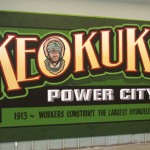

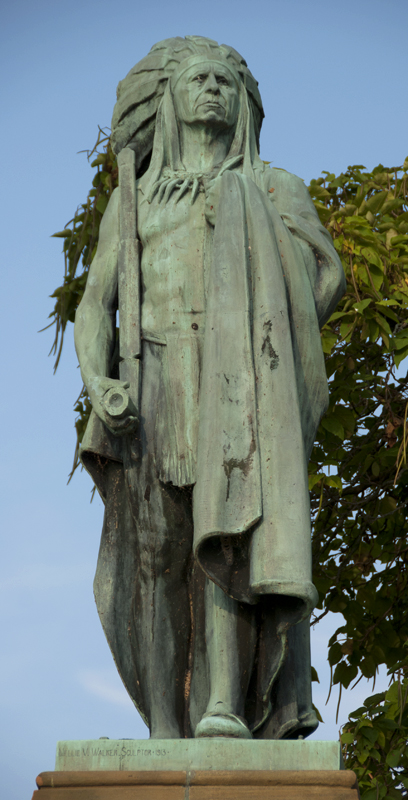
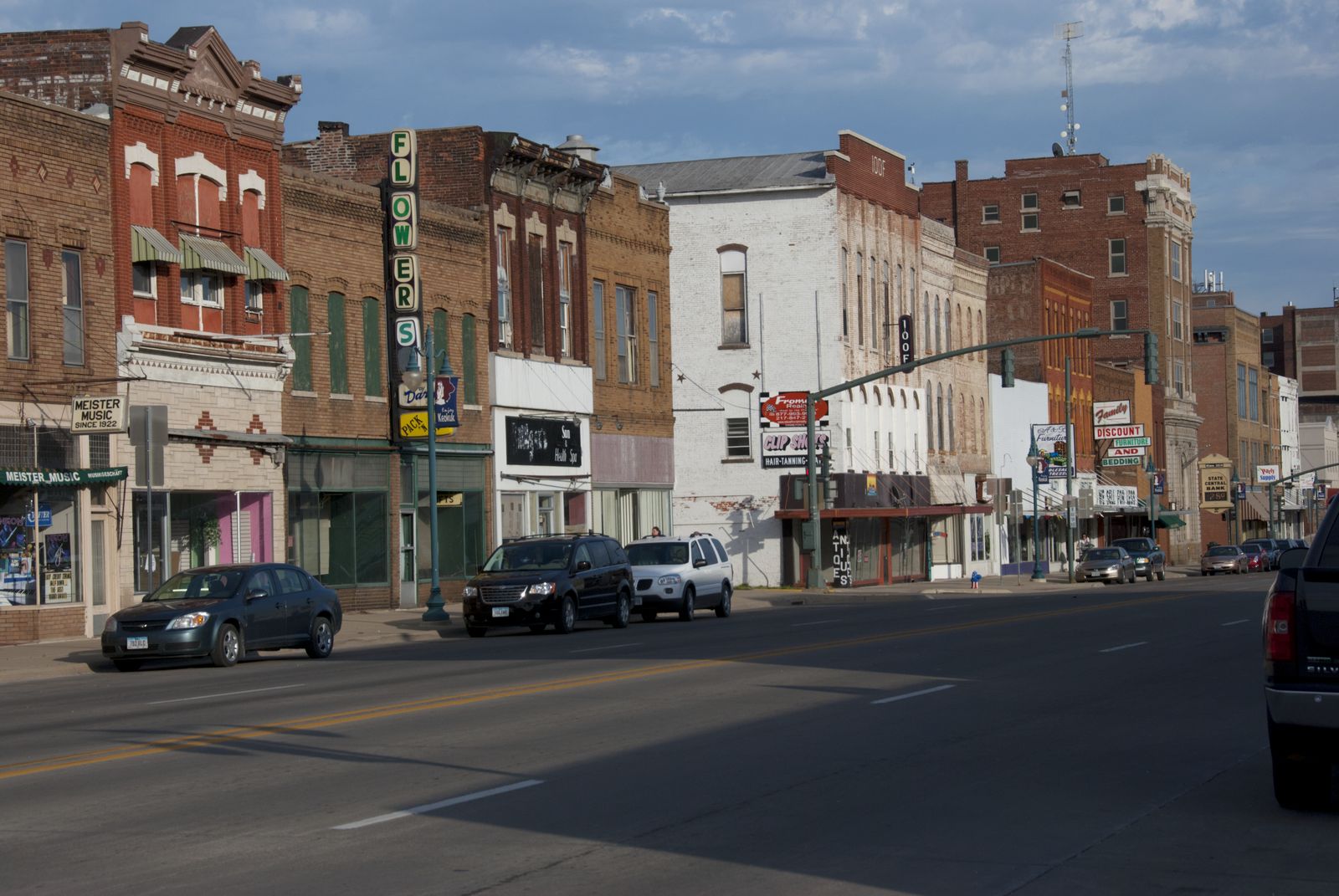
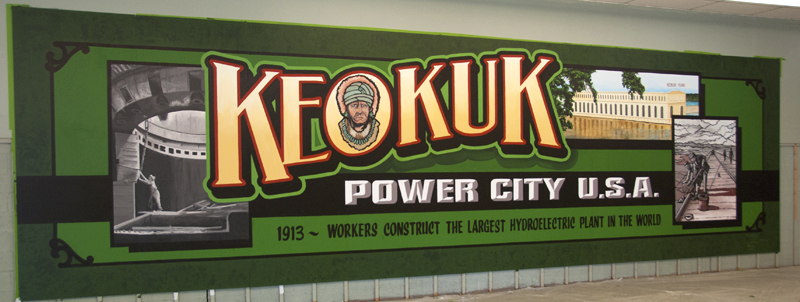
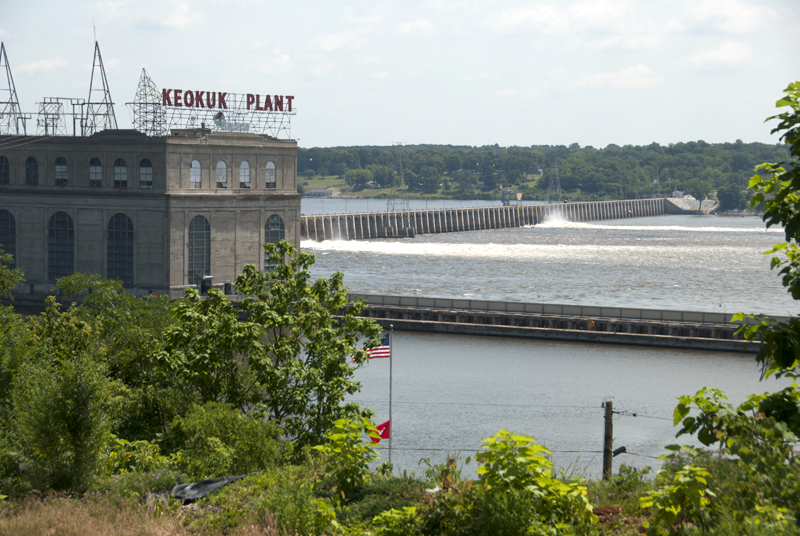
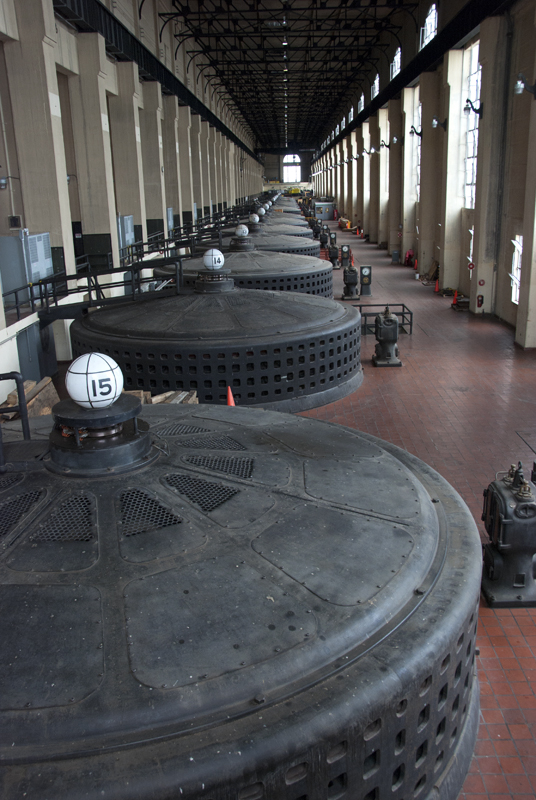
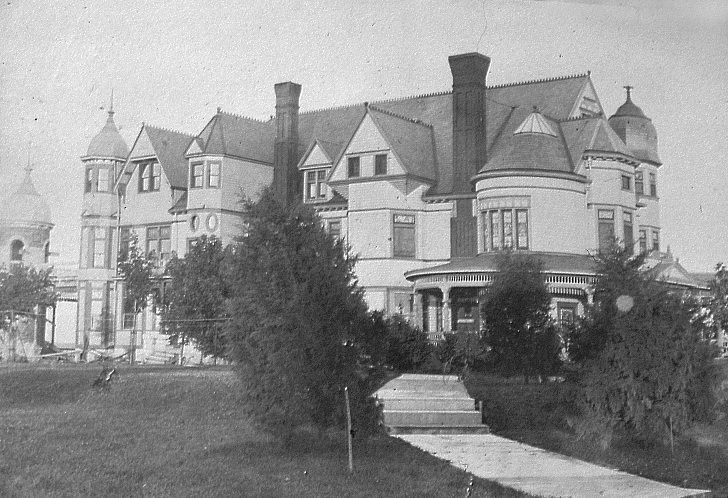

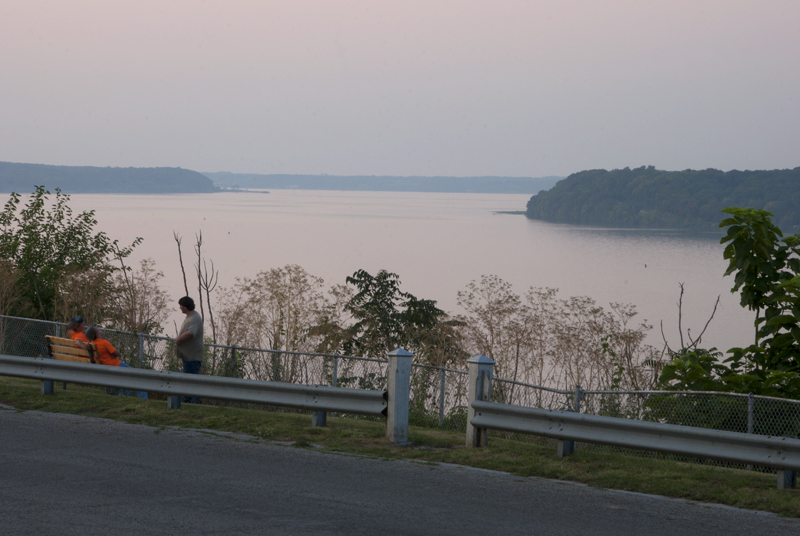


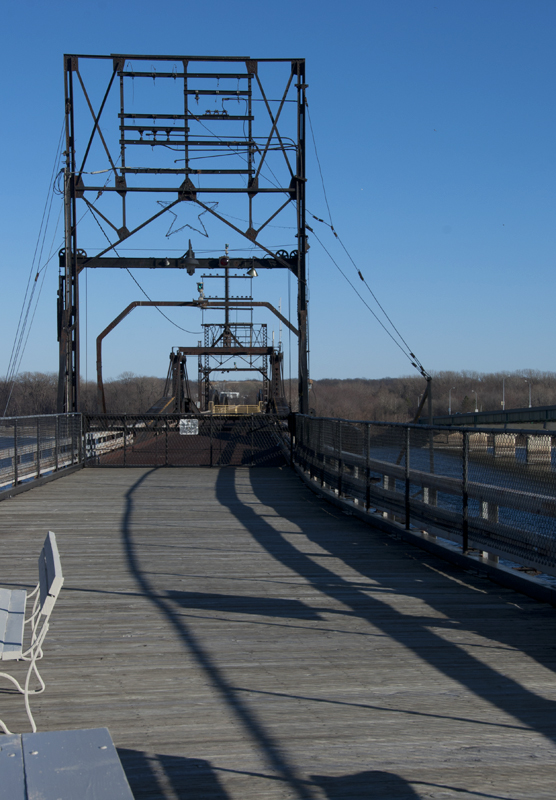

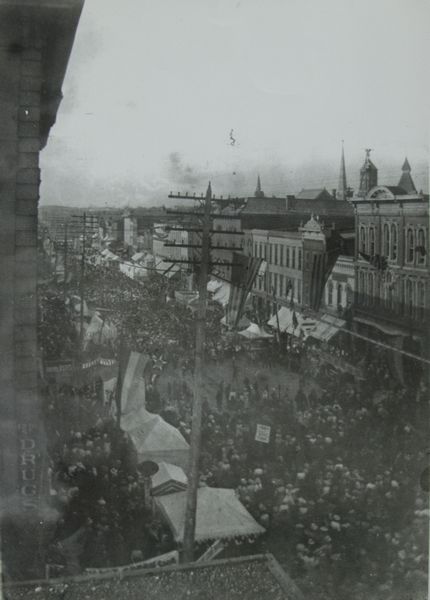
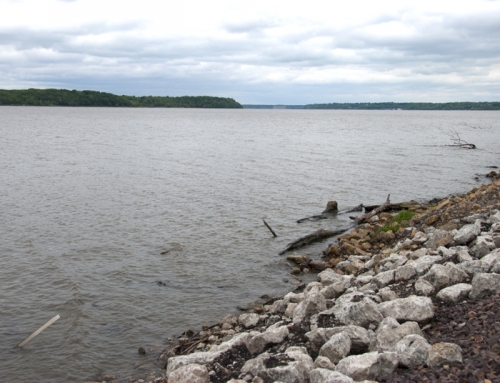
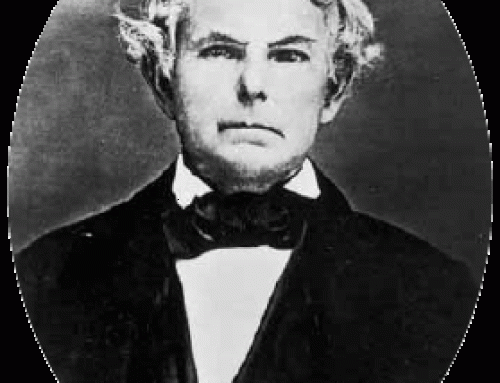
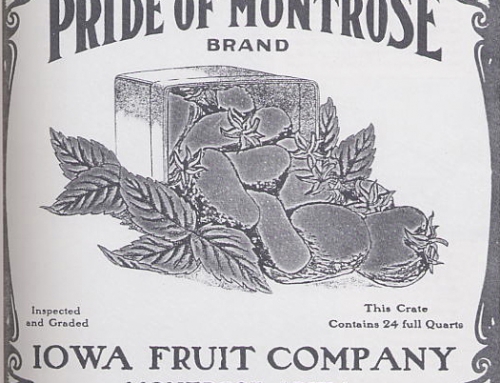
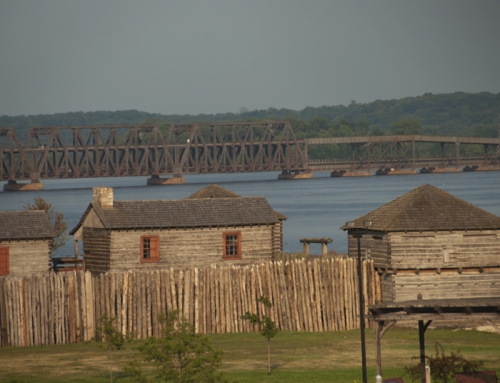
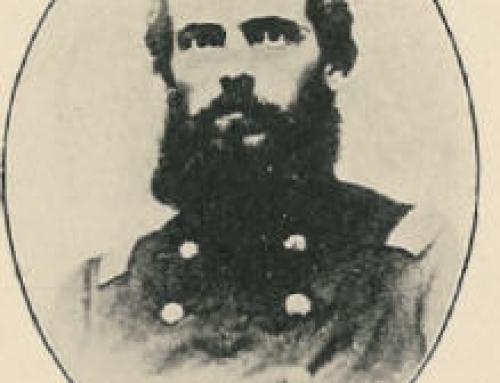
[…] via […]
Fascinating! Thanks for sharing all that research.